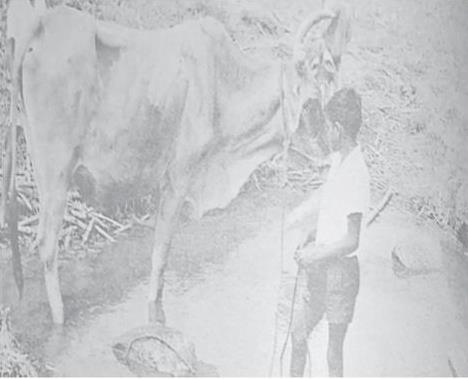To most farmers in the Western Division, a drought means crop failure, starving cattle and depleted or dried up water wells.
This is exactly how they felt when they expressed themselves in an article that appeared in The Fiji Times on October 14, 1969.
The adverse weather event had added to the severe economic hardship farmers were facing.
Many were already struggling to feed and clothe their families, pay school fees and make provision for emergencies.
The North-West was Fiji’s main sugar- producing area, on which the livelihoods of thousands depended.
Reports from Rakiraki, Tavua, Ba, Lautoka, Nadi and Sigatoka told of hundreds of acres of sugar cane wilted or burnt by the scorching heat and was uneconomical to harvest.
Seedlings planted earlier that year had either refused to grow or remained stunted owing to the lack of rain.
The Fiji Times met up with Sakeo Tuiwainikai, who had a 33-acre farm at Vitogo, Lautoka and had 18 acres for harvest that year. “Twelve acres of this are burnt and dried up.
“The plants did not grow any higher than three to four feet,” Mr Tuiwainikai said. In 1968, he had harvested 280 tons from that section of the farm but in 1969, he was not getting a single tonne, he added.
He had planned to plant 10 acres but the drought had prevented him planting even an acre. Mr Tuiwainikai said he had planted two acres of tapioca in June but none of the seedlings had grown.
He pulled them out after three weeks and replanted the crop. Even the second lot did not grow.
He said he never bought tapioca before but was forced to buy the rootcrop so his family could eat.
“I estimate my farm losses at about $2800. “If I didn’t have an outside job, my family would be starving.”
The South Pacific Sugar Mills field officer at Tagitagi, Shiva Gounder, reported that quite a few wells in the area had dried up.
He said there was hardly any fodder for farm cattle.
Some farmers were cutting their sugar cane to feed them.
The most drastic effect of the drought was felt when cane harvesting came to an end.
The weekly wages canecutters received helped them to buy their necessities. When this source of income ended, there would be real hardship.
Mr Dwarka Chaudhary of Olosara, Sigatoka, said entire fields of sugar cane in the Namata area and in other villages had been ruined by the drought.
There was an acute water shortage in most villages where wells had gone dry.
Families were dependent on twice-weekly supplies of 88 gallons of water. Mr Chaudhary said as levels had dropped, some wells along the coast had been contaminated by saltwater.
Garden vegetables in the Sigatoka Valley Rd area were being sustained by irrigation, the water being drawn by pipe and even carried in buckets from creeks.
He said cattle were starving. Nagaiya Sardar of Savusavu settlement in Nadi harvested 13 acres of cane in 1969.
His potential yield was reduced by more than 50 per cent. He said the previous year, he had harvested more than 400 tonnes.
People of Lovu and Vitogo near Lautoka depended on a small waterhole for washing clothes and bathing.
The waterhole, situated just beside the Lautoka-Ba highway, was running out of water.
It was less than a foot deep and stagnation had given it an unpleasant stench.
For their drinking water, the people depended on Government supplies.



